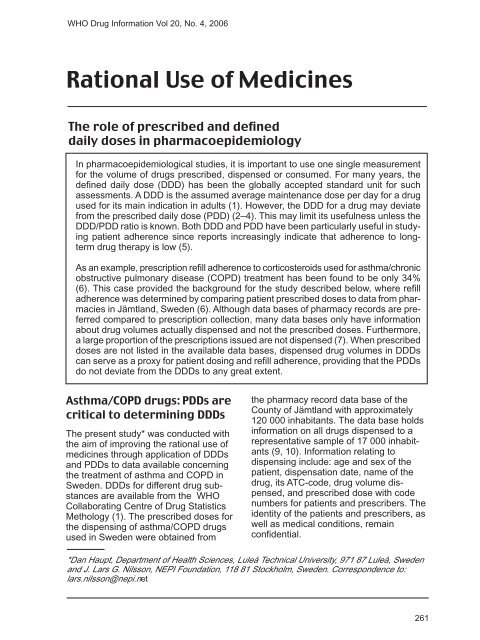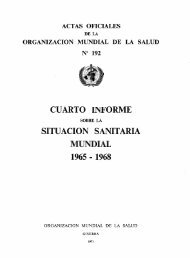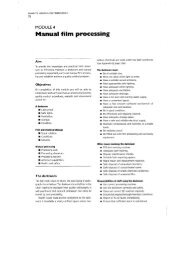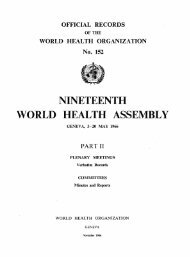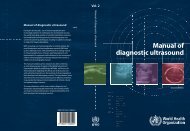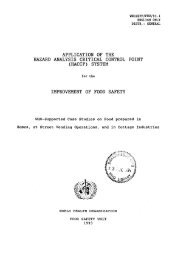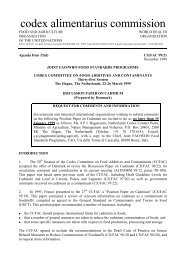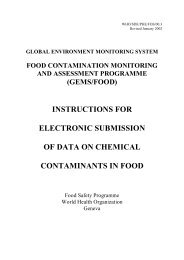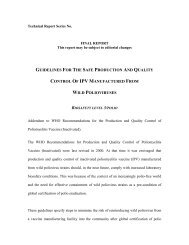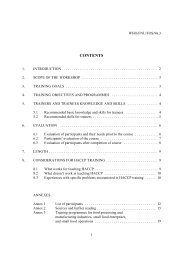WHO Drug Information Vol. 20, No. 4, 2006 - World Health ...
WHO Drug Information Vol. 20, No. 4, 2006 - World Health ...
WHO Drug Information Vol. 20, No. 4, 2006 - World Health ...
Create successful ePaper yourself
Turn your PDF publications into a flip-book with our unique Google optimized e-Paper software.
<strong>WHO</strong> <strong>Drug</strong> <strong>Information</strong> <strong>Vol</strong> <strong>20</strong>, <strong>No</strong>. 4, <strong>20</strong>06<br />
Rational Use of Medicines<br />
The role of prescribed and defined<br />
daily doses in pharmacoepidemiology<br />
In pharmacoepidemiological studies, it is important to use one single measurement<br />
for the volume of drugs prescribed, dispensed or consumed. For many years, the<br />
defined daily dose (DDD) has been the globally accepted standard unit for such<br />
assessments. A DDD is the assumed average maintenance dose per day for a drug<br />
used for its main indication in adults (1). However, the DDD for a drug may deviate<br />
from the prescribed daily dose (PDD) (2–4). This may limit its usefulness unless the<br />
DDD/PDD ratio is known. Both DDD and PDD have been particularly useful in studying<br />
patient adherence since reports increasingly indicate that adherence to longterm<br />
drug therapy is low (5).<br />
As an example, prescription refill adherence to corticosteroids used for asthma/chronic<br />
obstructive pulmonary disease (COPD) treatment has been found to be only 34%<br />
(6). This case provided the background for the study described below, where refill<br />
adherence was determined by comparing patient prescribed doses to data from pharmacies<br />
in Jämtland, Sweden (6). Although data bases of pharmacy records are preferred<br />
compared to prescription collection, many data bases only have information<br />
about drug volumes actually dispensed and not the prescribed doses. Furthermore,<br />
a large proportion of the prescriptions issued are not dispensed (7). When prescribed<br />
doses are not listed in the available data bases, dispensed drug volumes in DDDs<br />
can serve as a proxy for patient dosing and refill adherence, providing that the PDDs<br />
do not deviate from the DDDs to any great extent.<br />
Asthma/COPD drugs: PDDs are<br />
critical to determining DDDs<br />
The present study* was conducted with<br />
the aim of improving the rational use of<br />
medicines through application of DDDs<br />
and PDDs to data available concerning<br />
the treatment of asthma and COPD in<br />
Sweden. DDDs for different drug substances<br />
are available from the <strong>WHO</strong><br />
Collaborating Centre of <strong>Drug</strong> Statistics<br />
Methology (1). The prescribed doses for<br />
the dispensing of asthma/COPD drugs<br />
used in Sweden were obtained from<br />
the pharmacy record data base of the<br />
County of Jämtland with approximately<br />
1<strong>20</strong> 000 inhabitants. The data base holds<br />
information on all drugs dispensed to a<br />
representative sample of 17 000 inhabitants<br />
(9, 10). <strong>Information</strong> relating to<br />
dispensing include: age and sex of the<br />
patient, dispensation date, name of the<br />
drug, its ATC-code, drug volume dispensed,<br />
and prescribed dose with code<br />
numbers for patients and prescribers. The<br />
identity of the patients and prescribers, as<br />
well as medical conditions, remain<br />
confidential.<br />
*Dan Haupt, Department of <strong>Health</strong> Sciences, Luleå Technical University, 971 87 Luleå, Sweden<br />
and J. Lars G. Nilsson, NEPI Foundation, 18 81 Stockholm, Sweden. Correspondence to:<br />
lars.nilsson@nepi.net<br />
261


